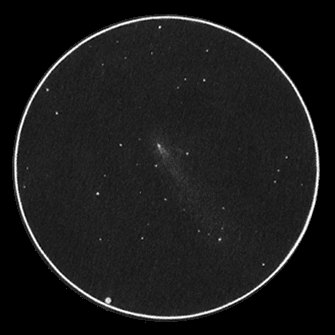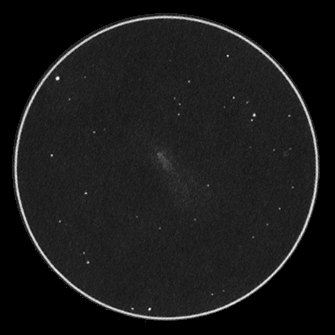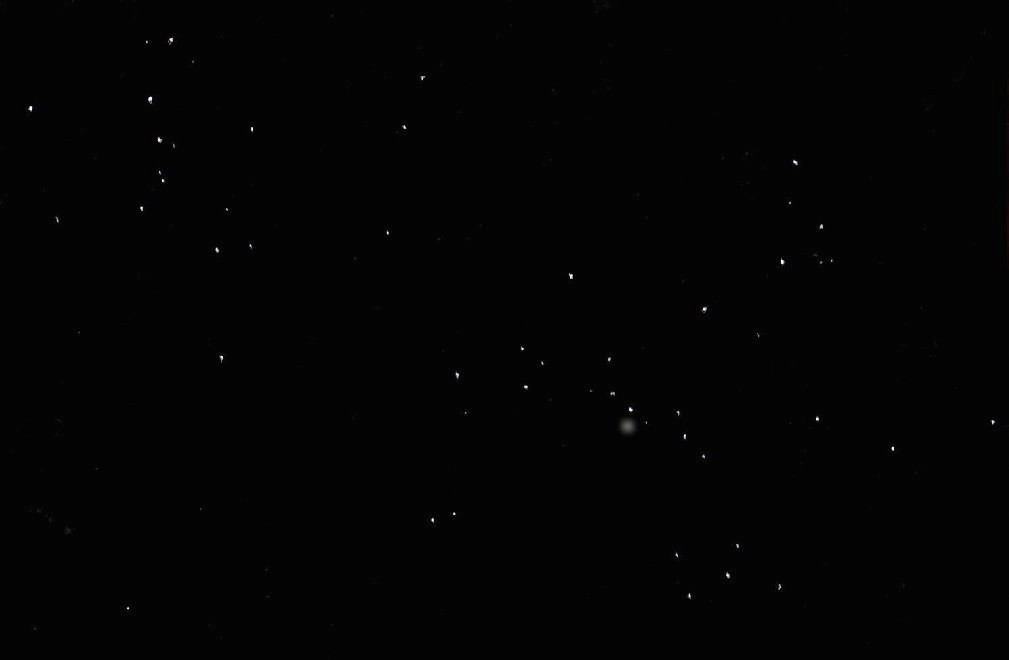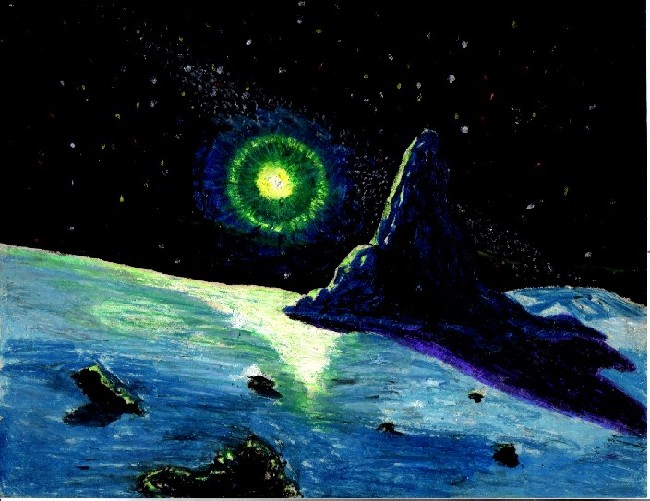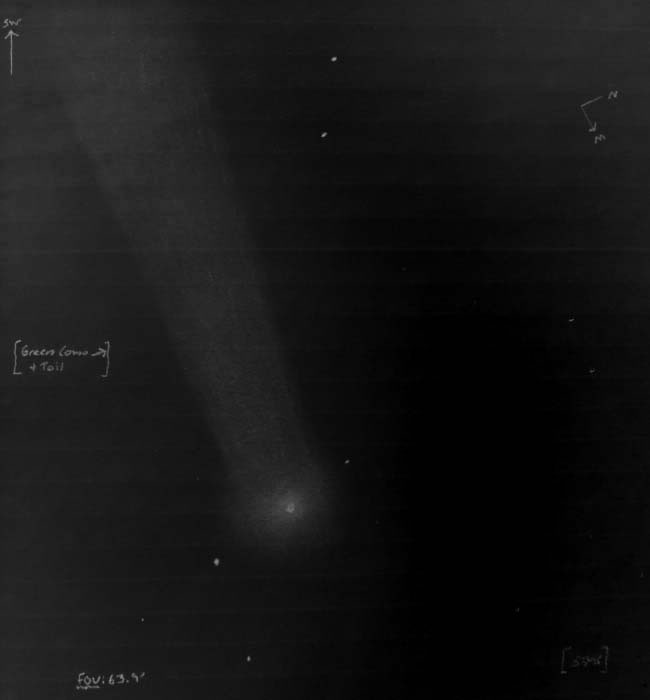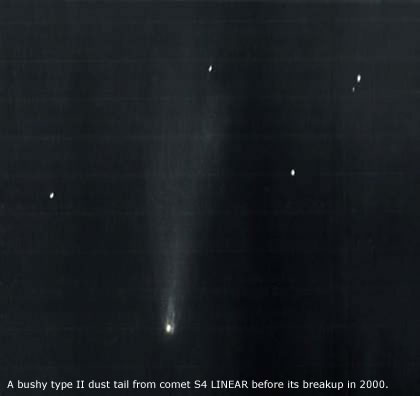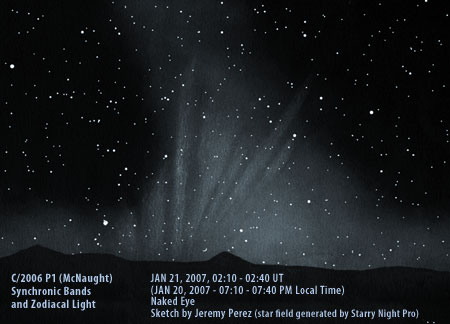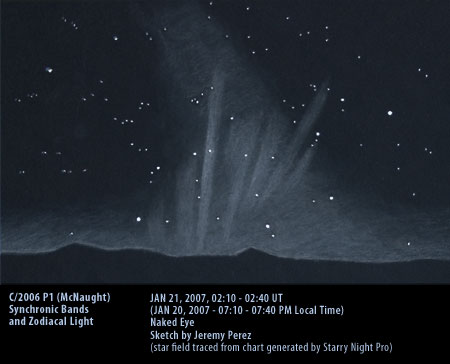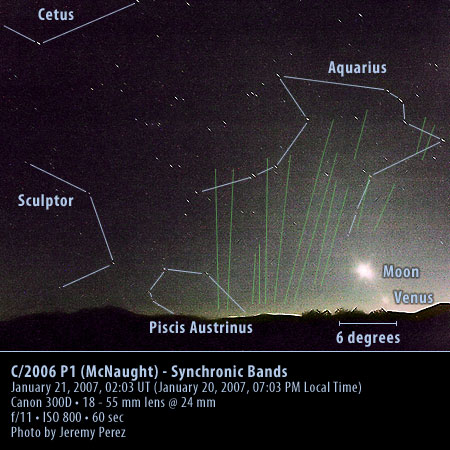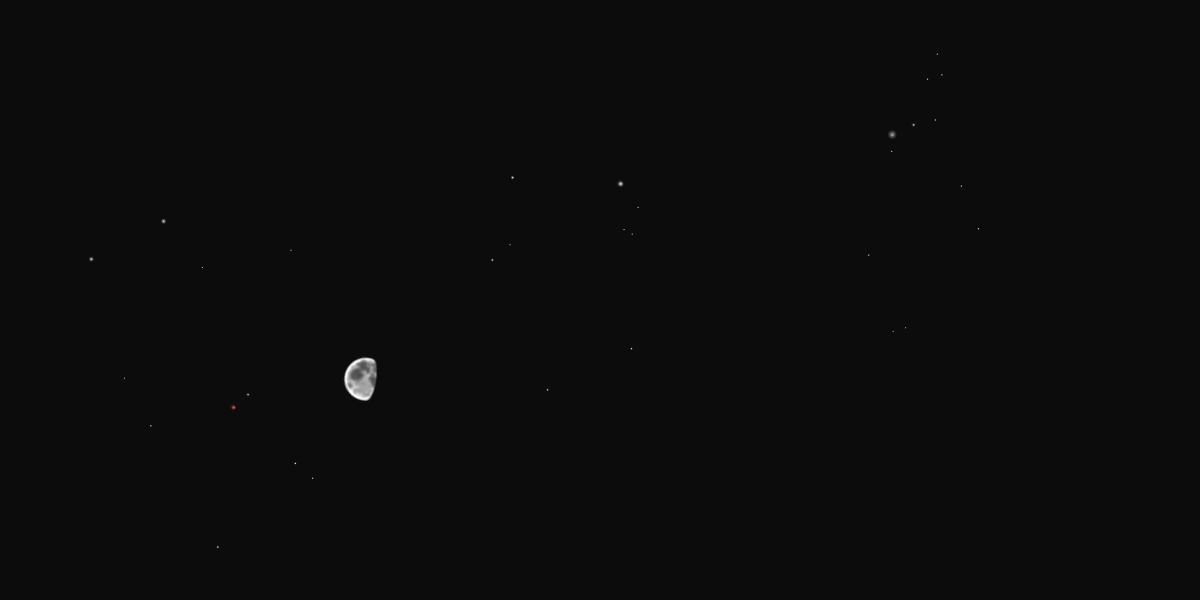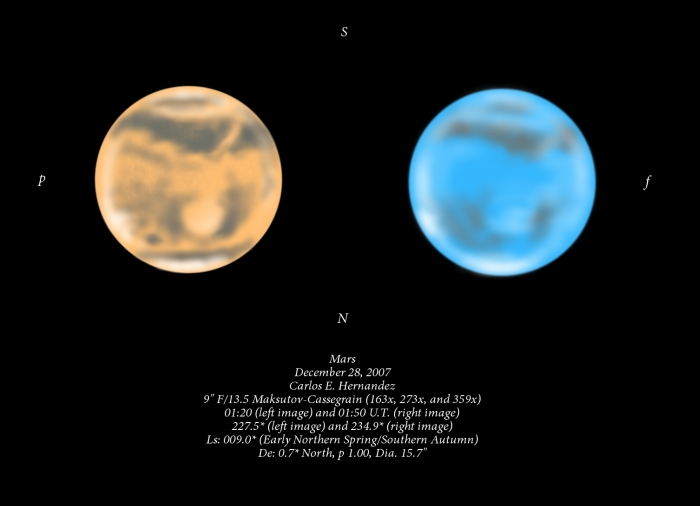
Mars – Cimmerium and Elysium Regions
Sketch and Commentary By Carlos E. Hernandez
I made a pair of observations on December 28, 2007 using my 9-inch (23-cm) F/13.5 Maksutov-Cassegrain. I noted a significant amount of detail over the Mare Cimmerium and Elysium regions of Mars. I welcome any comments on my observations.
Date (U.T.): December 28, 2007
Time (U.T.): 01:20 (left image, IL) and 01:50 (right image, Wratten 38A)
CM: 227.5*W (left image) and 234.9*W (right image)
Ls: 009.0* (Early Northern Spring/Southern Autumn)
De: 0.7* North, p 1.00, Dia. 15.7″
Instrument: 9-inch (23-cm) F/13.5 Maksutov-Cassegrain
Magnification: 163x, 273x, and 359x
Seeing (1-10): 6-7, Antoniadi (I-V): II
Transparency (1-6): 5
Notes:
01:20 U.T. (Left image, CM 227.5*W, IL): The South Polar Region (SPR) appears obscured by a very bright to extremely bright (8-9/10). Mare Australe appears dusky to shaded (4-6/10) north of the haze. Electris, Eridania, and Ausonia appear to be obscured by a bright to very bright (7-8/10) haze. Mare Cimmerium appears dark to dusky (3-4/10) and mottled. The northern border of Mare Cimmerium contains projections (Laestrygonum Sinus, Cyclopum Sinus, and Cerberi Sinus, preceding to following). “Valhalla” was visible north of Mare Cimmerium as a dusky (4/10) band. Hesperia appears as a bright (7/10) diagonal strip between Mare Cimmerium and Mare Tyrrhenum. Mare Tyrrhenum appears dark to shaded (partially obscured by a very bright (8/10) morning limb haze (MLH). Zephyria, Aeolis, Aethiopis, and Aetheria appears bright (7/10). Amazonis and Arcadia appear dusky to shaded (4-6/10) and mottled. A very bright (8/10) orographic cloud is visible over Olympus Mons over the north-preceding (evening) limb. Trivium Charontis, Phlegra, and Azania appear dark to dull (3-5/10). The Propontis Complex (Propontis I and II, Castorius Lacus, and Euxinus Lacus) appears dark to dusky (3-4/10). Elysium appears bright with a very bright (8/10) cloud over it’s north-preceding sector. Panchaia appears bright (7/10) and Lemuria (dusky (4/10). The Hyblaeus Extension appears dark to dull (3-5/10) following Elysium. Syrtis Major appears to be obscured the very bright (8/10) MLH. The North Polar Cap (NPC) appears brilliant (10/10) along the northern limb.
01:50 U.T. (Right image, CM 234.9*W, Wratten 38A (Blue) filter): Mare Cimmerium appears dusky (4/10). The southern limb, preceding (evening) limb, northern limb, and following (morning) limb appear very bright (8/10). A very bright (8/10) orographic cloud appear over Olympus Mons over the preceding limb. A very bright (8/10) cloud appears over Elysium.
The best of luck in your own observations of Mars.
Regards,
Carlos E. Hernandez

